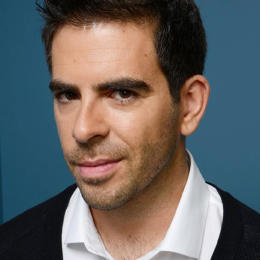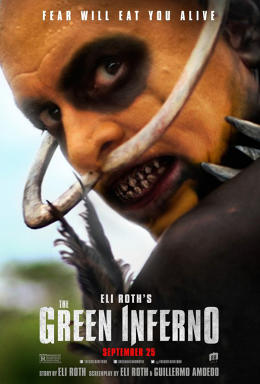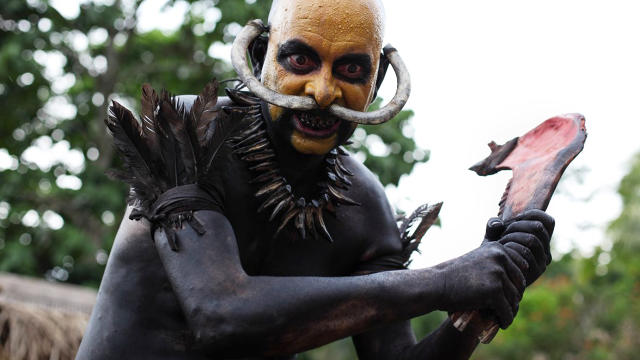5 Bloody just right lessons On growing intensity, From The Twisted mind Of Eli Roth
The horror maestro behind the very hectic new movie the fairway Inferno talks about how depth is what will get pulses pounding.
September 25, 2015
something dangerous goes to happen. You realize it’s coming—this is what you signed up for—you simply don’t understand how bad it’ll be, or when it’ll happen. Then it does occur, and it’s much more horrifying than you’d been bracing for . . . and it’s going to occur over and over.
this is what an Eli Roth movie looks like—filmmaking as endurance check.

“I needless to say after I was a child and that i saw a horror film, it used to be a dare to take a look at and make it via to the end. Like, are you able to even take it?” Roth says. “i feel like there is not this kind of film anymore.”
there’s now. the golf green Inferno, Roth’s newest disasterpiece, is an expertise. That’s the one method to describe it. while unspeakably terrible issues happen to the characters in the film—a bunch of pupil activists who meet-not-cute with an Amazonian cannibal tribe—viewers themselves undergo one thing too. Shuddering. Shortness of breath. The sinking feeling that the whole thing is not going to be k. It’s the more or less movie you need to actively are trying to not take into consideration for days later, lest you relive no matter it was you went through.
So what is it about Eli Roth’s movies that makes them so pulse-poundingly visceral? it is the sheer intensity. When issues go foul in the fairway Inferno, which is out in theaters on September 25, the audience cannot help but squirm—mostly for the reason that man at the back of the curtain has saved them in a state of sparsely orchestrated agitation the remainder of the time. Roth’s next film, Knock Knock, opening October 9, offers a equivalent intensity, although it can be a psychological erotic thriller, fairly than a straight-up horror film. even supposing Roth admits that Knock Knock is more indicative of the route he is heading towards at some point, Co.Create caught up with the director to speak about crafting inexperienced Inferno’s depth—the sort his audiences consume up.
Let The completed Product reflect The advent prerequisites
occasionally the way a film, or any piece of artwork, is made cannot help however shine thru within the artwork itself.
“i needed to make a film where you’re feeling like the people that made the film have been crazy,” he says, citing Coppola’s Apocalypse Now as an influence. “We were going into the jungle with a digital camera and a machete and coming out with a film. i wished the viewer to feel the depth of constructing the experience. We took a movie crew farther into the Amazon than any person had taken a film earlier than. all the villagers participated within the making of the movie, and it used to be dangerous. every day was once 5 hours of traveling, you might be combating the bugs, the snakes, the tarantulas, the climate. there were many, many, many near misses. Thank God we made it out of there ok.”

The Calm issues As so much as the Storm
Eli Roth’s movies unfold in any such way that viewers are by no means certain exactly when the hammer goes to swing. by the point it does, though, they’re usually so deeply involved in the story and characters that they are suffering from what happens to them.
“it is all about persona and efficiency,” he says. “while you’re happening an journey with these children, you must care about them and be invested within the story—despite the fact that you do not essentially like them or accept as true with them. My job because the director and the writer is to write sincere characters. i am no longer there to evaluate them. and that i actually discovered that from [collaborator] Quentin [Tarantino]. Quentin’s like, ‘i’m no longer there to impose my morality on these characters. If these characters are racist, then they’re racist, if that is the language they use, that’s the language they use. They need to be real.’ and that’s the reason what lifestyles is. There are some people you’re friends with and there’s folks you need to put up with, but that’s what lifestyles is. So after I’m writing characters and i am telling a story, i am in no rush to get to the horror.

With green Inferno, Hostel, Cabin Fever—the commute trilogy—we need to see these youngsters’s world. We want to see why we’re telling their story, why are we enthusiastic about them, what’s enjoyable about them, do you want to root for them to die, do you need to peer who’s gonna live? it can be getting them and it can be making the audience wait for the reason that longer you are making the audience wait, they understand something horrific is coming and in the event you supply it to them in an instant, you might be letting the air out of the tires.”
Misdirection Is a route
now not most effective must the target market be waiting for hell to break loose, they must be suspended in a wholly totally different context—to additional highlight the distance of where issues are going to end up.

“I imagine in giving folks something that disarms them,” Roth says. “individuals fought the primary 45 minutes of Hostel as a result of I shot it like a intercourse comedy. It was colourful, it used to be enjoyable, it was shot with steadicam. and then after Oli disappears, we begin to drain the colour away in every scene. It starts off like closing American Virgin, and by means of the tip of the movie you are in Eraserhead or Schindler’s record, in this ashen world where it can be handheld cameras. With inexperienced Inferno, we begin off and it looks as if you’ve obtained Mail or Spider-Man. it can be fall in ny and you’ve got Zabars and Cornet Pizza and yellow taxicabs—and via the tip you might be in some horrible, horrible documentary the place it’s out of center of attention, it is utterly jittery,and you’re feeling as disoriented as the characters do, and that’s very, very intentional.”
There’s a Time To Starve Your target market, And a Time To Feed Them
big gross-out moments are what Eli Roth has transform recognized for, even supposing observant viewers will discover these moments are in reality in moderation spread out throughout his films.
“Gore is an ingredient. it is no longer what makes a movie frightening,” Roth says. “A movie is sort of a pizza. You make a decision, do you like the skinny crust, or do you adore a brick oven? How do you like your sauce? How much olive oil? then you add toppings on, and which is your gore. including more of it does not imply that the pizza’s gonna be higher. in case you add an excessive amount of, it dominates the whole taste of the pizza and you leave out the whole lot else and it can be no longer that just right. since you needed a pizza, you didn’t want simply that one topping. an excessive amount of gore overpowers the remainder of the film and it if truth be told turns into boring. perhaps there may be a phrase for that: goring.

there may be a time while you starve the target market and there is a time the place you in point of fact give it to them. What that does is it creates this sense of dread and anticipation for, ‘Oh my God, if this is the case bad now, i do not even wish to see what’s coming next.’ that is what I discovered in Hostel. The scariest part was the guy looking on the desk, choosing the tools he was going to make use of for torture. and that is the reason what I needed to drag out the longest. I wish I even had extra pictures of it, as a result of by the time you get to the killing, the target audience is protecting their eyes. if you’ve in point of fact performed your job as a director, setting up a terrifying scene, no one must be gazing the display when it happens.”
Make The red Meat in point of fact, truly purple And Meaty
which you could get a variety of mileage through delaying giant gross-out set pieces in a horror movie, to maintain audiences disoriented, but when it can be that roughly movie, you have to in reality deliver when the time comes. Eli Roth did exactly that in green Inferno, and recommendations that he won’t want to even do it once more.

“on the subject of [one specifically gruesome scene in green Inferno], that’s what individuals are deciding to buy, so that you block quite a few time for it,” he says. “I in reality suppose thru it, too. I read about rituals, tribal rituals, of what folks do to invaders, and i thought, what is the most horrible thing that may occur to the [person] that least deserves it? it can be essentially the most horrible death. You simply can’t imagine. It simply goes on and on and on and on. I didn’t storyboard it. There used to be no monitor. I was the one working a digital camera—we were running and gunning. We knew the moments we wanted and that i really, truly wanted to guarantee that I had the opposite characters’s reactions for every second. I made certain that shall we actually, in point of fact take our time and get it right. And we talked a lot about [the character’s] squeal. it is bad, this guttural loss of life squeal that used to be so darkish and horrible—an terrible, awful noise. So, yeah, there are some scenes like that with this film, however inexperienced Inferno really is my mic drop. I don’t recognize the place else to head from there.”
(94)














